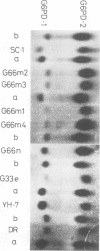Abstract
G mouse cells were resistant to N- and NB-tropic Friend leukemia viruses and to B-tropic WN 1802B. Though the cells were resistant to focus formation by the Moloney isolate of murine sarcoma virus, they were relatively sensitive to helper component murine leukemia virus. To amphotropic murine leukemia virus and to focus formation by amphotropic murine sarcoma virus, G mouse cells were fully permissive. When the cell lines were established starting from the individual embryos, most cell lines were not resistant to the murine leukemia viruses. Only one resistant line was established. Cloning of this cell line indicated that the resistant cells constantly segregated sensitive cells during the culture; i.e., the G mouse cell cultures were probably always mixtures of sensitive and resistant cells. Among the sensitive cell clones, some were devoid of Fv-1 restriction. Such dually permissive cells, and also feral mouse-derived SC-1 cells, retained glucose-6-phosphate dehydrogenase-1 and apparently normal number 4 chromosomes. The loss of Fv-1 restriction in these mouse cells was not brought about by any gross structural changes in the vicinity of Fv-1 on number 4 chromosomes.
Full text
PDF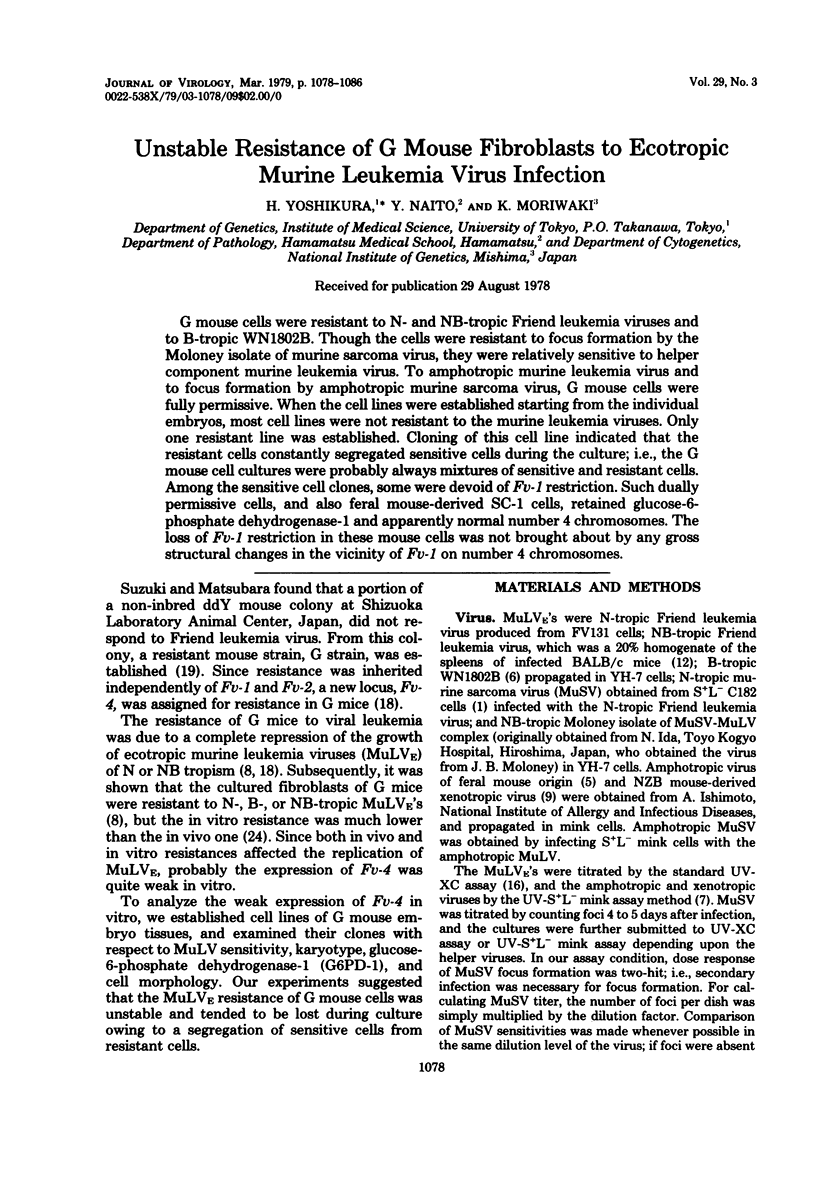
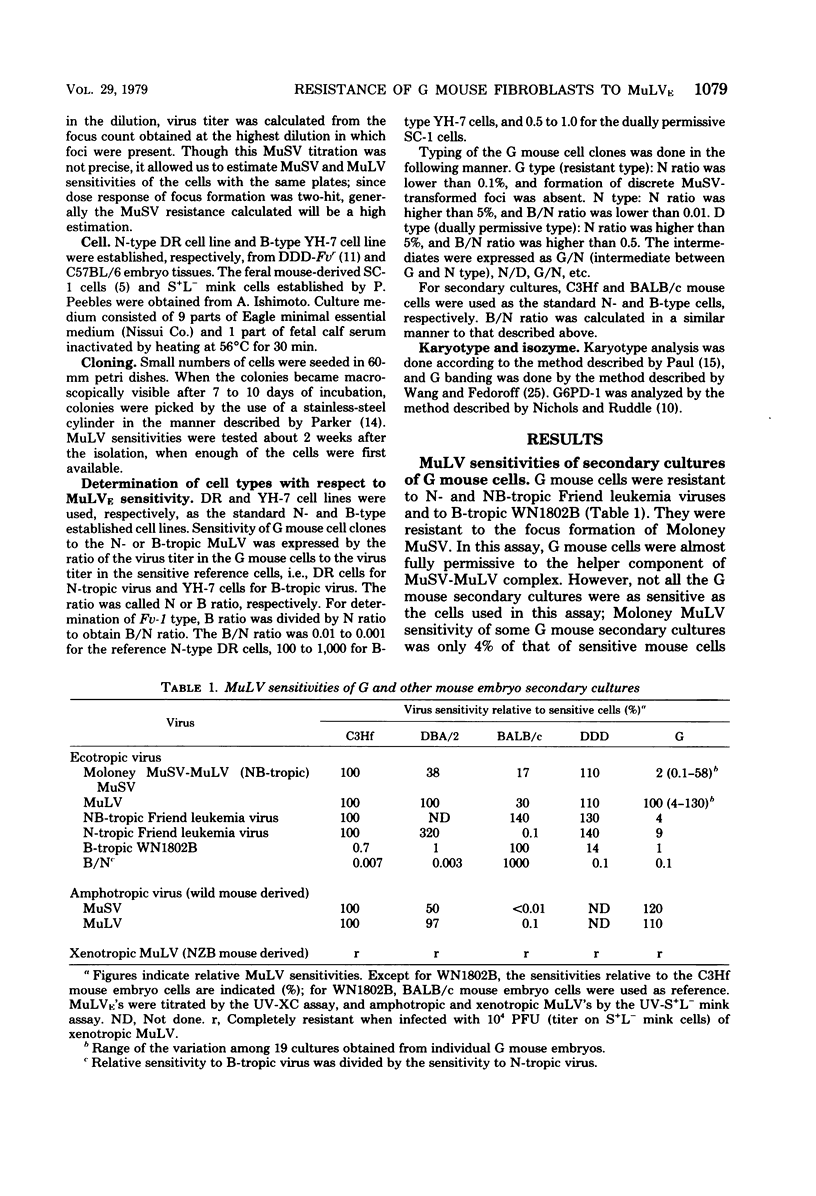
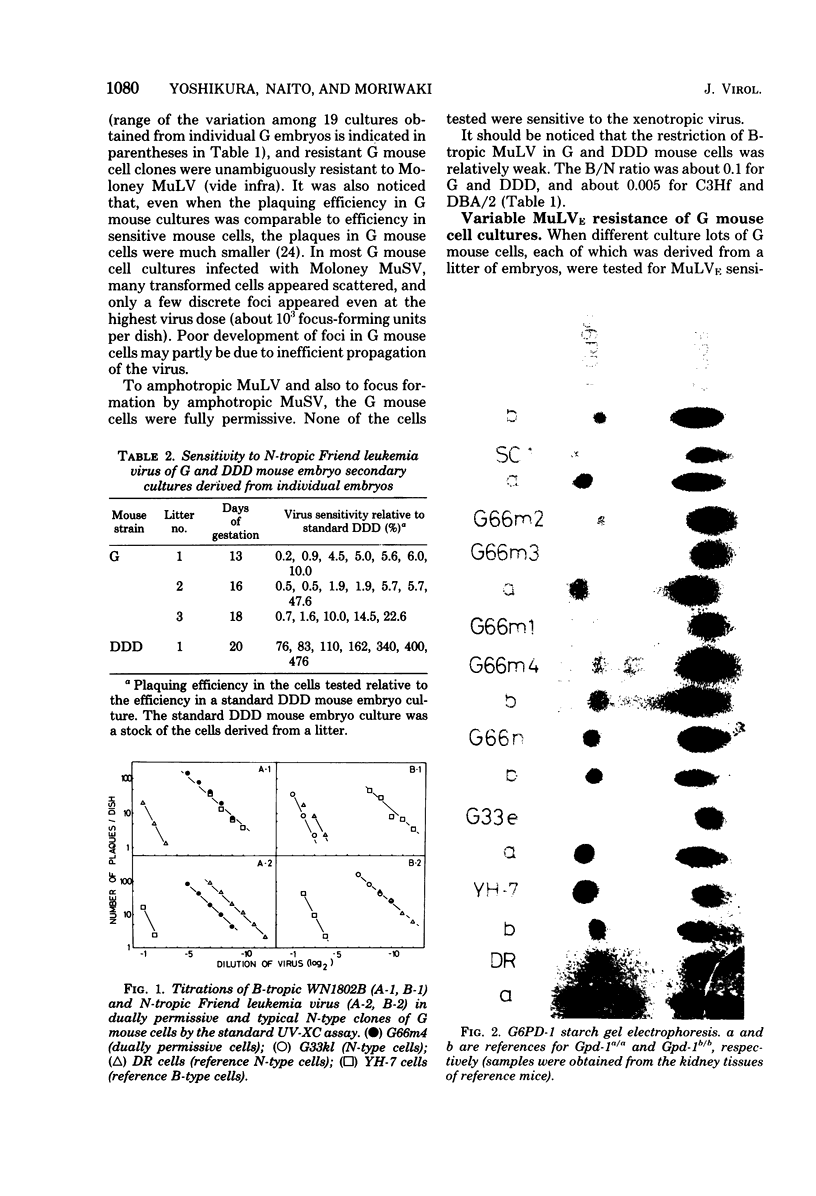
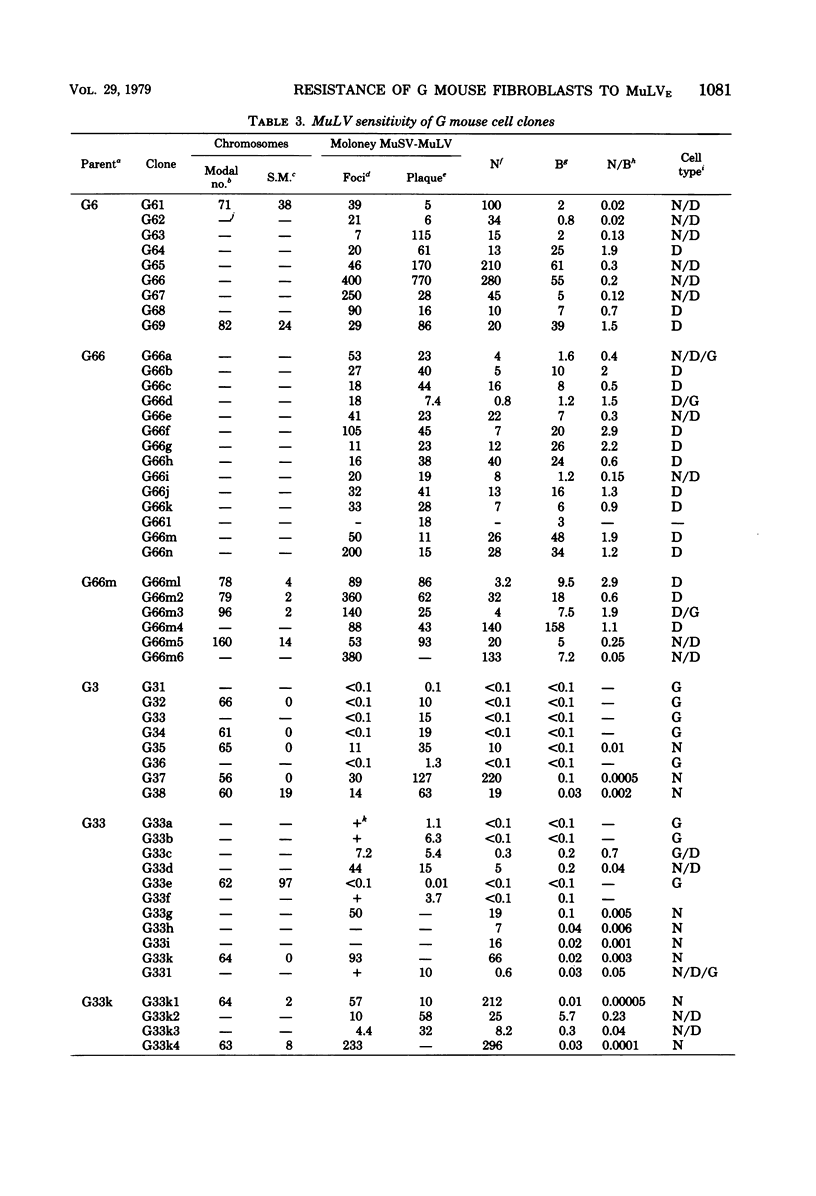
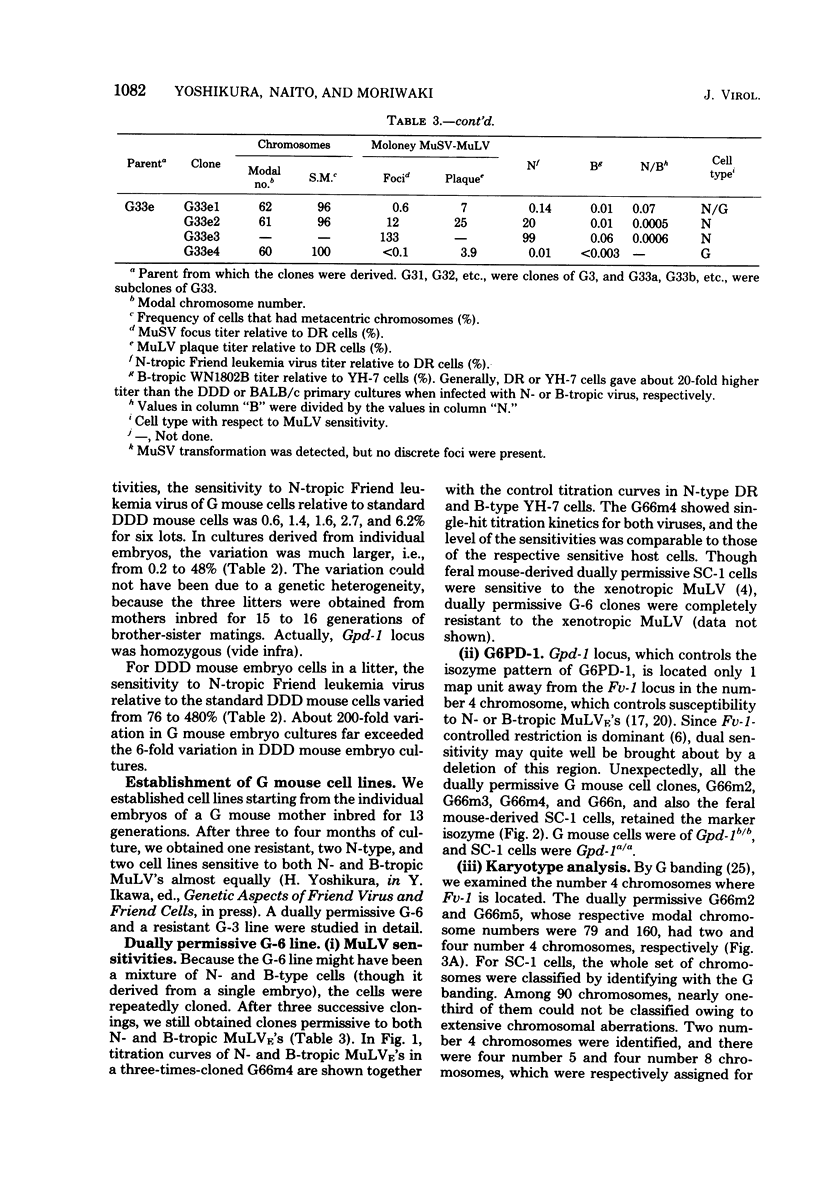
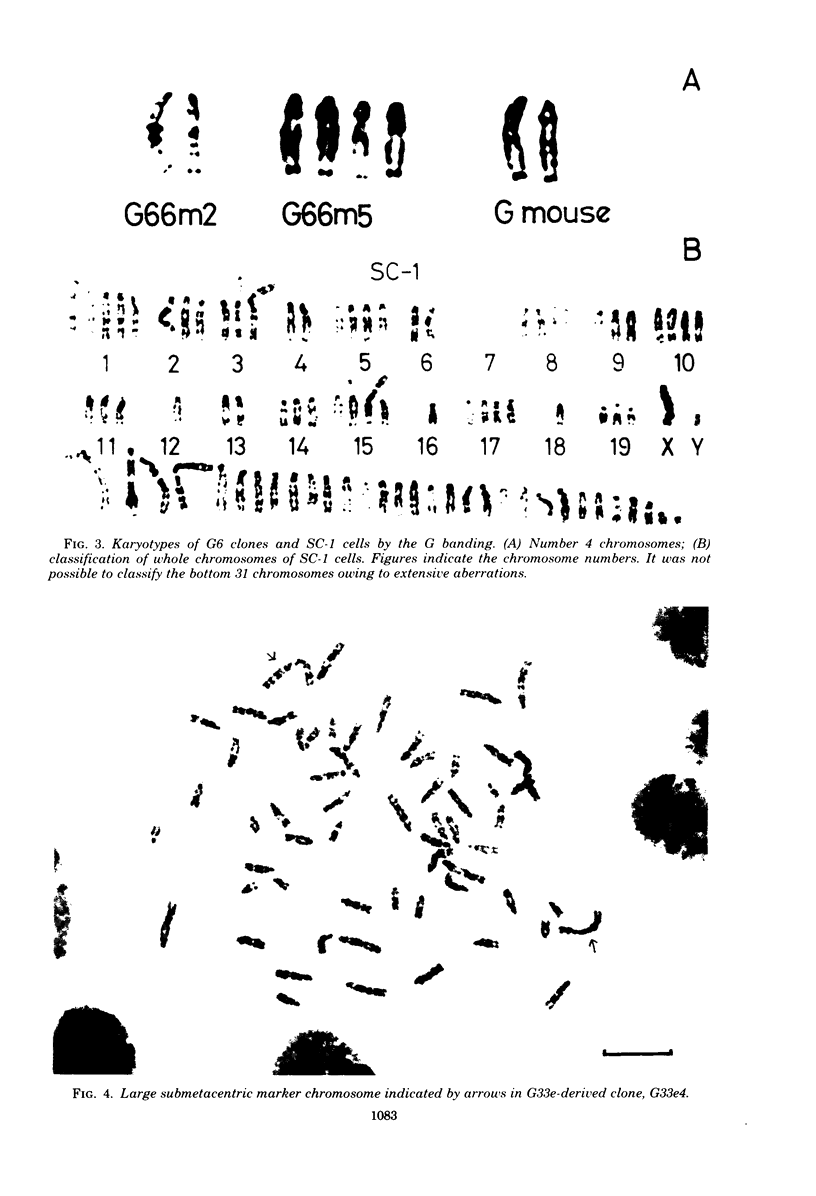
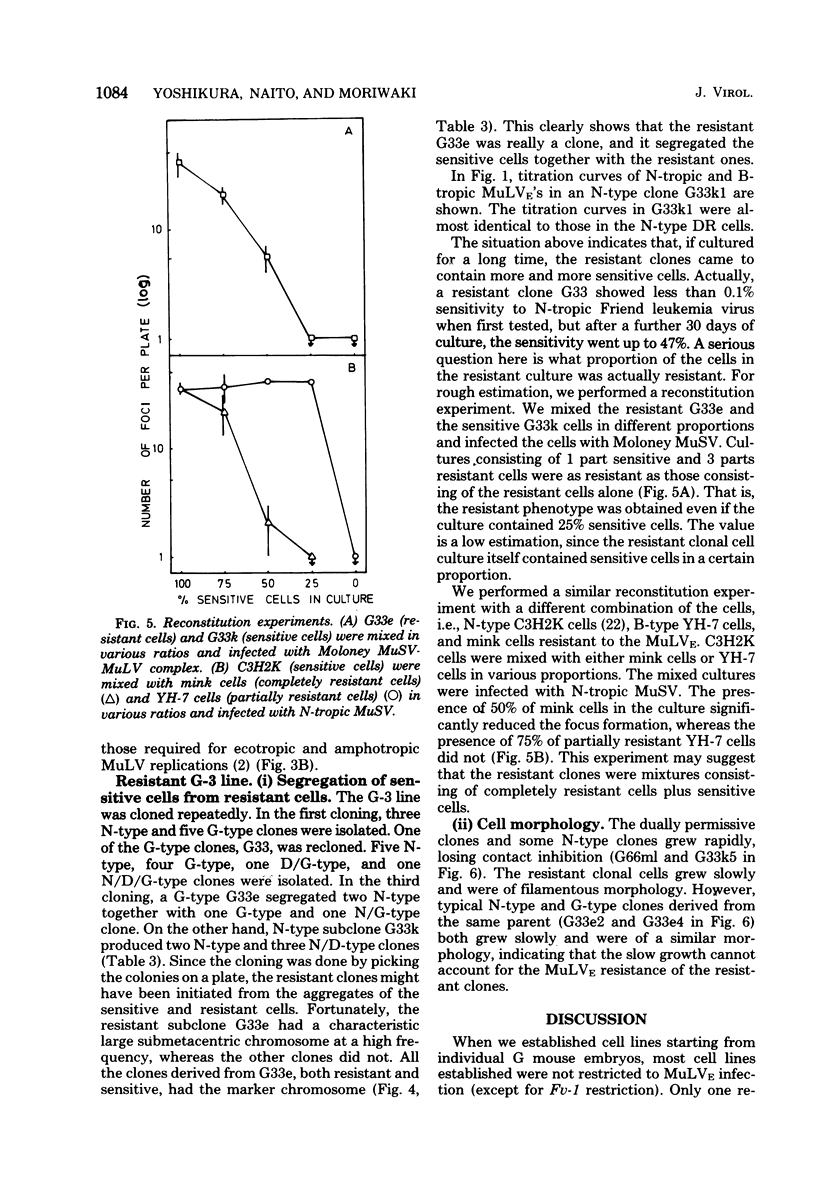
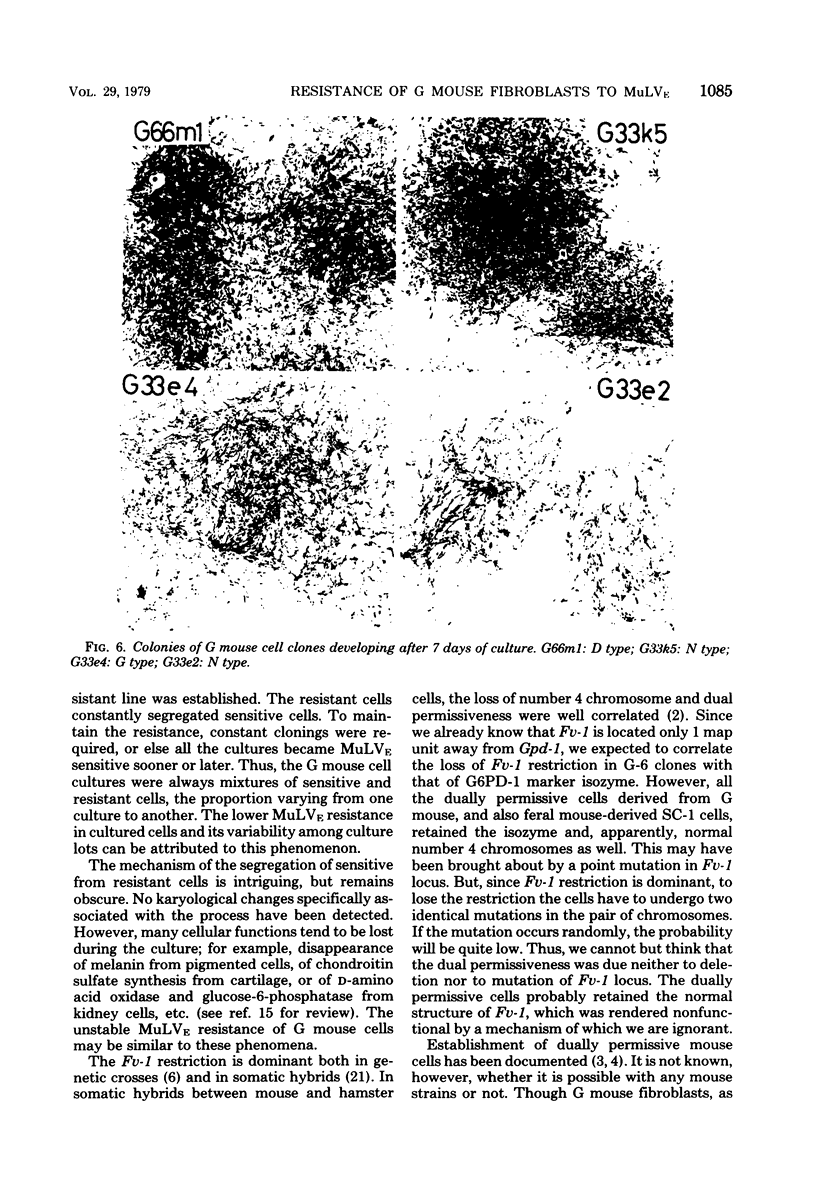
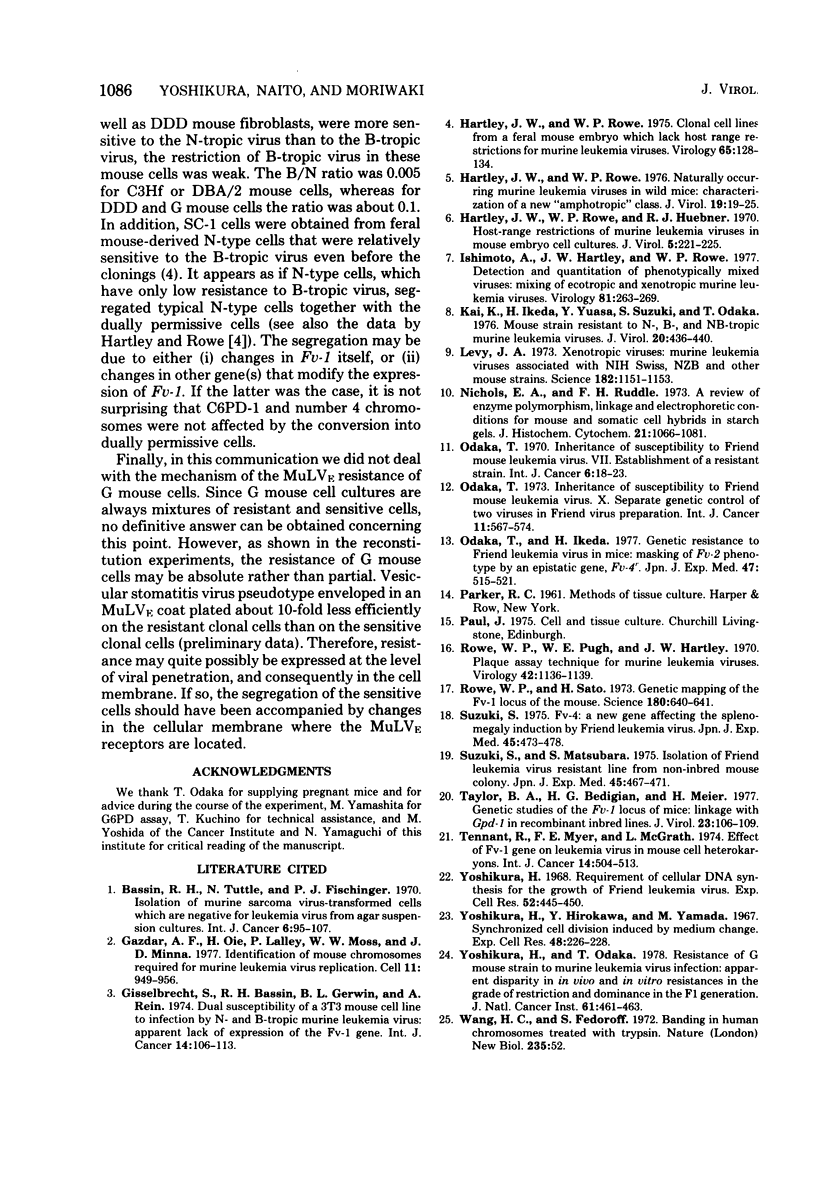
Images in this article
Selected References
These references are in PubMed. This may not be the complete list of references from this article.
- Bassin R. H., Tuttle N., Fischinger P. J. Isolation of murine sarcoma virus-transformed mouse cells which are negative for leukemia virus from agar suspension cultures. Int J Cancer. 1970 Jul 15;6(1):95–107. doi: 10.1002/ijc.2910060114. [DOI] [PubMed] [Google Scholar]
- Gazdar A. F., Oie H., Lalley P., Moss W. W., Minna J. D. Identification of mouse chromosomes required for murine leukemia virus replication. Cell. 1977 Aug;11(4):949–956. doi: 10.1016/0092-8674(77)90306-3. [DOI] [PubMed] [Google Scholar]
- Gisselbrecht S., Bassin R. H., Gerwin B. I., Rein A. Dual susceptibility of A 3T3 mouse cell line to infection by N- and B-tropic murine leukemia virus: apparent lack of expression of the FV-1 gene. Int J Cancer. 1974 Jul 15;14(1):106–113. doi: 10.1002/ijc.2910140113. [DOI] [PubMed] [Google Scholar]
- Hartley J. W., Rowe W. P. Clonal cells lines from a feral mouse embryo which lack host-range restrictions for murine leukemia viruses. Virology. 1975 May;65(1):128–134. doi: 10.1016/0042-6822(75)90013-6. [DOI] [PubMed] [Google Scholar]
- Hartley J. W., Rowe W. P., Huebner R. J. Host-range restrictions of murine leukemia viruses in mouse embryo cell cultures. J Virol. 1970 Feb;5(2):221–225. doi: 10.1128/jvi.5.2.221-225.1970. [DOI] [PMC free article] [PubMed] [Google Scholar]
- Hartley J. W., Rowe W. P. Naturally occurring murine leukemia viruses in wild mice: characterization of a new "amphotropic" class. J Virol. 1976 Jul;19(1):19–25. doi: 10.1128/jvi.19.1.19-25.1976. [DOI] [PMC free article] [PubMed] [Google Scholar]
- Ishimoto A., Hartley J. W., Rowe W. P. Detection and quantitation of phenotypically mixed viruses: mixing of ecotropic and xenotropic murine leukemia viruses. Virology. 1977 Sep;81(2):263–269. doi: 10.1016/0042-6822(77)90143-x. [DOI] [PubMed] [Google Scholar]
- Kai K., Ikeda H., Yuasa Y., Suzuki S., Odaka T. Mouse strain resistant to N-, B-, and NB-tropic murine leukemia viruses. J Virol. 1976 Nov;20(2):436–440. doi: 10.1128/jvi.20.2.436-440.1976. [DOI] [PMC free article] [PubMed] [Google Scholar]
- Levy J. A. Xenotropic viruses: murine leukemia viruses associated with NIH Swiss, NZB, and other mouse strains. Science. 1973 Dec 14;182(4117):1151–1153. doi: 10.1126/science.182.4117.1151. [DOI] [PubMed] [Google Scholar]
- Nichols E. A., Ruddle F. H. A review of enzyme polymorphism, linkage and electrophoretic conditions for mouse and somatic cell hybrids in starch gels. J Histochem Cytochem. 1973 Dec;21(12):1066–1081. doi: 10.1177/21.12.1066. [DOI] [PubMed] [Google Scholar]
- Odaka T., Ikeda H. Genetic resistance to Friend leukemia virus in mice: masking of Fv-2 phenotype by an epistatic gene, Fv-4. Jpn J Exp Med. 1977 Dec;47(6):515–521. [PubMed] [Google Scholar]
- Odaka T. Inheritance of susceptibility to Friend mouse leukemia virus. VII. Establishment of a resistant strain. Int J Cancer. 1970 Jul 15;6(1):18–23. doi: 10.1002/ijc.2910060104. [DOI] [PubMed] [Google Scholar]
- Odaka T. Inheritance of susceptibility to Friend mouse leukemia virus. X. Separate genetic control of two viruses in Friend virus preparation. Int J Cancer. 1973 May;11(3):567–574. doi: 10.1002/ijc.2910110308. [DOI] [PubMed] [Google Scholar]
- Rowe W. P., Pugh W. E., Hartley J. W. Plaque assay techniques for murine leukemia viruses. Virology. 1970 Dec;42(4):1136–1139. doi: 10.1016/0042-6822(70)90362-4. [DOI] [PubMed] [Google Scholar]
- Rowe W. P., Sato H. Genetic mapping of the Fv-1 lcous of the mouse. Science. 1973 May 11;180(4086):640–641. doi: 10.1126/science.180.4086.640. [DOI] [PubMed] [Google Scholar]
- Suzuki S. FV-4: a new gene affecting the splenomegaly induction by Friend leukemia virus. Jpn J Exp Med. 1975 Dec;45(6):473–478. [PubMed] [Google Scholar]
- Suzuki S., Matsubara S. Isolation of Friend leukemia virus resistant line from non-inbred mouse colony. Jpn J Exp Med. 1975 Dec;45(6):467–471. [PubMed] [Google Scholar]
- Taylor B. A., Bedigian H. G., Meier H. Genetic studies of the Fv-1 locus of mice: linkage with Gpd-1 in recombinant inbred lines. J Virol. 1977 Jul;23(1):106–109. doi: 10.1128/jvi.23.1.106-109.1977. [DOI] [PMC free article] [PubMed] [Google Scholar]
- Tennant R. W., Myer F. E., McGrath L. Effect of the Fv-1 gene on leukemia virus in mouse cell heterokaryons. Int J Cancer. 1974 Oct 15;14(4):504–513. doi: 10.1002/ijc.2910140410. [DOI] [PubMed] [Google Scholar]
- Wang H. C., Fedoroff S. Banding in human chromosomes treated with trypsin. Nat New Biol. 1972 Jan 12;235(54):52–54. doi: 10.1038/newbio235052a0. [DOI] [PubMed] [Google Scholar]
- Yoshikura H., Hirokawa Y., Yamada M. Synchronized cell division induced by medium change. Exp Cell Res. 1967 Oct;48(1):226–228. doi: 10.1016/0014-4827(67)90309-6. [DOI] [PubMed] [Google Scholar]
- Yoshikura H., Odaka T. Resistance of G mice to murine leukemia virus infection: apparent disparity in in vivo and in vitro resistances. J Natl Cancer Inst. 1978 Aug;61(2):461–463. [PubMed] [Google Scholar]
- Yoshikura H. Requirement of cellular DNA synthesis for the growth of Friend leukemia virus. Exp Cell Res. 1968 Oct;52(2):445–450. doi: 10.1016/0014-4827(68)90486-2. [DOI] [PubMed] [Google Scholar]



